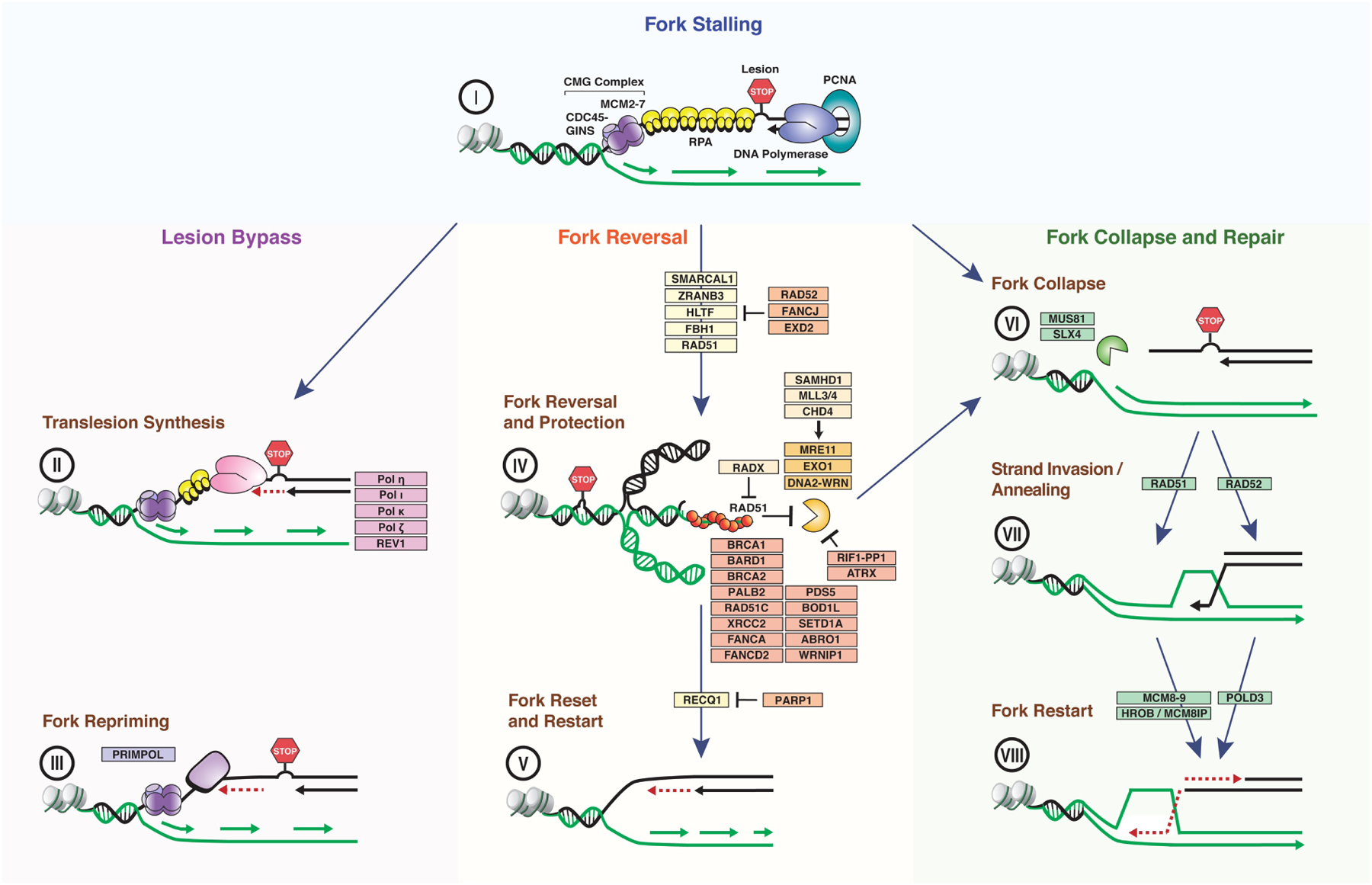Figure 1. Simplified schematics of the mechanisms of replication fork restart upon replication stress.

When the replication machinery encounters a replication block (stop sign), replication fork progression stalls, leading to the formation of single-stranded DNA (ssDNA) that is rapidly coated by the RPA trimer (I). Restart of stalled forks can occur through lesion bypass by translesion synthesis or fork repriming (II-III). Translesion synthesis allows the direct bypass of the DNA lesion (II), while fork repriming promotes the restart of DNA synthesis downstream of the lesion (III). Alternative to lesion bypass, stalled forks can undergo reversal mediated by fork remodelers, including the SNF2-family members SMARCAL1, ZRANB3 and HLTF (IV). Fork reversal slows down replication fork progression, thus allowing sufficient time for repair of the lesion. Reset of reversed forks by the RECQ1 helicase can then promote the restart of DNA synthesis once the lesion has been removed (V). Fork reversal could also directly promote the bypass of the DNA lesion by enabling DNA synthesis on the nascent DNA strand of the sister chromatid (green) through template switching (not shown). Following fork reversal, the exposed ends of the regressed fork are stabilized by RAD51 to limit fork resection by the nucleases MRE11, DNA2 and EXO1 and protect the integrity of the fork (IV). Limited fork resection can facilitate fork restart through the reset of reversed forks or HR-dependent strand invasion catalyzed by the 3’-end of the resected regressed arm (not shown). BRCA1/2, RAD51 paralogs and Fanconi anemia proteins cooperate with RAD51 to control fork resection and maintain fork protection. Defective fork protection causes extensive fork resection and processing of the regressed fork by the endonucleases SLX4 and MUS81, leading to fork collapse (VI). Fork collapse can also result from MUS81-mediated cleavage of persistently arrested replication forks or from forks encountering single-strand DNA breaks. Collapsed forks are repaired by HR-mediated fork restart pathways dependent on RAD51 and/or RAD52 (VI-VIII). Key factors involved in each pathway and described in the main text are indicated.
